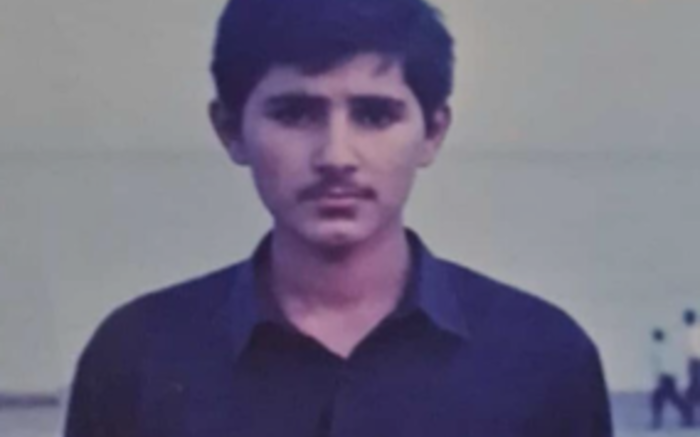A photo of Teymur captures one last look at a boy who disappeared during the First Karabakh conflict. His family recalls the heartbreak as Teymur fades into fond yet distant memory.
Karabakh’s Agdam means so many things to so many people. It was once a place of granite apples, bountiful pomegranate fields. Every species of pomegranate grows naturally in Azerbaijan, and in Karabakh, they flourished. Ilkana Goja recalled her childhood home in Agdam as being like a parcel straight from Eden, with a huge pergola wrapped around her father and uncle’s semi-attached house.
She talks about her life before the war with such mixed emotions, vivid details, the excitement of reliving them. Goja remembered being there as the bombings broke down her family walnut trees planted by her great grandfather, scattering their splinters across distant memory. She enthusiastically describes her family had a large parcel of land that had many rivers and natural water bodies on it. She studied to become a medical doctor along the banks of those water bodies. She recalled how her multi-colored hanging rose baskets, which she had nurtured since she was 13-years-old, have passed into her memories.
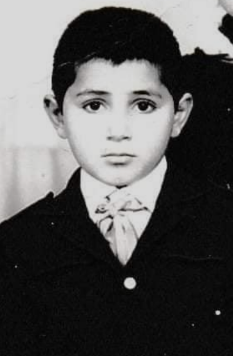
Teymur, as a small boy.
Her childhood before the war was a happy one. What was once a place of beautiful childhood memories became a war zone and brutally obliterated under the Armenian occupation.
“There is nothing left of Agdam,” she said, stating that people cannot go into the city because of the scattering of land mines. To her, the memory of her city is still blooming in her heart. She recalled that she, her sister, and her youngest brother were forced into a car by the older relatives in the family, and forced to leave the city to go a few kilometers away to where her grandmother was living during the First Karabakh conflict.
In place of the lush pomegranates and grapes, the soil of Aghdam is now filled with mines. Agdam has heavily mined mines. Words fail to display the deliberate, systematic destruction of Agdam. With exception of one mosque, everything leveled, the buildings converted to raw materials and taken away from the city. Structures were not the only things that are taken away but also human remains from excavated cemeteries. Qoja’s family cemetery, Qaragaci cemetery is completely wiped out from the surface of the earth. The history of the cemetery goes back to the 12th century. According to the scientist, there were coins found near old graves that dated back to the 12th century. According to the scientist, Qaragaci cemetery was a pilgrimage from the 15th century.
There is not even a single grave left behind. After the historical cemetery was excavated, it partially turned into wheat fields.
Even historical graves of a poetess, philanthropist Khurshudbanu Natavan, and her children, in the Princess Palace in Agdam, are gone, as the bones were exhumed, the stones were broken down.
The loss and devastation do not end there for the internally displaced, the expatriate displaced. There is a large number of missing persons, reportedly 4,354. The vanishing displaced stand as one of the most piercing realities of the Karabakh conflict, as civilian families in many cases to this day, 30 years later, do not know what became of their loved ones.
One of those missing is Goja’s little brother Teymur. He was the eldest of all of her brothers, younger than her by a year, having been a mere 17-years-old when he disappeared. He would not leave Aghdam at the time that Goja and her other younger siblings were forcibly sent away to be with their grandmother. Goja recalled how her brother did not want to leave his ancestral homeland behind. He disappeared during the First Karabakh conflict, and the trail for him has run cold since.
As bombings intensified and arrived at the vicinity of her grandmother’s village Qoja was forced to leave Agdam and return to live with her aunt in Baku.
“My parents went back, and they told me not to worry, that they were not bombing. I never believed them, though, because of course, they were bombing,” she recalled, with sadness then, the circumstances under which Teymur initially disappeared. She noted that, during the displacement, Teymur and her father got into two separate vehicles. Goja’s father saw Teymur as they crossed by each other on one of the roads, as they crossed over a railway, and Teymur waved. This was on 23 July 1993.
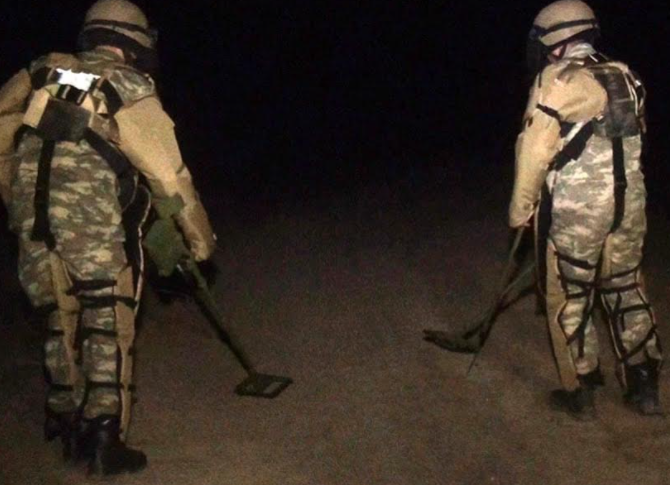
“The next day they all were again together in Agcabedi city, waiting to get back home. A few months later Teymur did not want to wait and did not want more villages and cities occupied. He went to the border and stayed with his friends at the borderline, was supporting soldiers at the backline. We were all wanting to go back, and to make Aghdam a beautiful place again,” Goja recalled, stating the reasoning behind Teymur’s return to the war zone. Teymur was last seen in the Culluje village area, near the Kosali village as the city came under siege.
“Teymur wasn’t even 18. He went back to fight for his home, fight for what was rightfully his and get back what belonged to him, his home – Agdam. That place was part of him, it was his soul. Mine too,” said Goja.
An Azerbaijani poster calls for Armenia to give maps of the landmines left behind in the region.
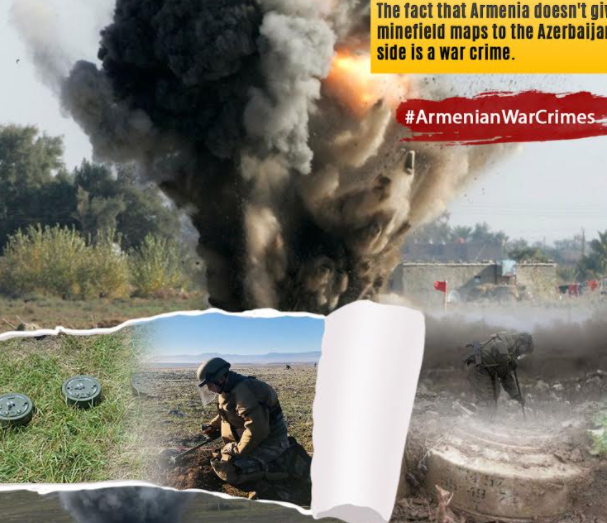
“I recently contacted my brother’s best friends and comrades that were at the same place with Teymur on 18 April 1994. On April 18, 1994, between 09:30 and 10:00, Russian tanks, BTRs, and over 300 Russian soldiers, not Armenian, attacked them. Eyewitnesses reported seeing at least 8 Russian tanks, BTRs, and over 300 mostly Russian soldiers who mercilessly killed everyone,” said Goja.
“Soldiers describe tanks driving on alive bodies of the Azerbaijani soldiers and Armenians walking behind shooting who were still alive. Temur was seen laying on the ground, half alive. Another friend of Teymur reports how one friend of his was trying to pull unconscious Teymur into safety. The entire time the team was kept under heavy shelling for a few days. One of Temur’s friends remembers 18 April 1994, feeling guilty for not being able to take his best friend Teymur with him. Unfortunately, Armenian troops would not confirm that his body was laying right there at the occupied side.”
Goja put a strong emphasis on the presence of Russian soldiers in the region in 1994.
“One of Teymur’s friends, who is rather blond, was captured by a Russian soldier who then released him thinking that he was of Russian origin, and told him to run. When he arrived at the safe zone, he started seeking after my brother. Someone told him that another friend of his was carrying my wounded brother on his shoulders. That friend is missing too,” said Goja.
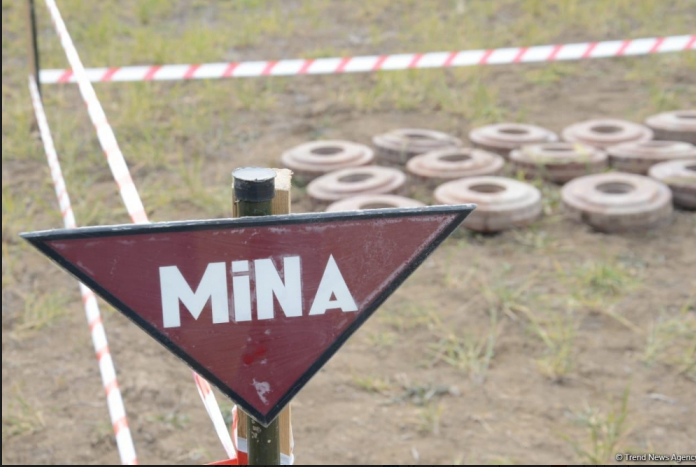
“A couple of weeks later one of the Armenian officers sent information that he knew where Teymur was. According to this Armenian Officer, Teymur was captured and was brought to an Armenian family or mother of an Armenian soldier who had lost her son too. She wanted to exchange Teymur for her son, as one of Teymur’s friend’s reports. In 1994 and 1995 a couple of Armenian military persons contacted our family that Teymur was alive and for exchange either a big amount of money or another “captivated Armenian soldiers were demanded. When our family would first ask for a new picture of him, nothing was produced. Since that time we have never heard anything about Teymur,” she recalled.
Teymur’s disappearance had turned her world upside down. She searched for information about her brother. She desires to go back to the scene and seek more information about Teymur’s last known whereabouts. However, due to the lingering presence of the mines in the territory, reentry into the region is incredibly difficult.
When finally, Agdam was liberated in December 2020, the family got a new hope. Maybe now all hostages taken in the 90s would be returned. The family started to search again. Teymur’s name is again on the list of the missing people in the 90s, with 4,354 captivates. Unfortunately, the Armenian side refuses to provide information about the fate of these people. The question is what happened to those young men who were captured on 18 April 1994?
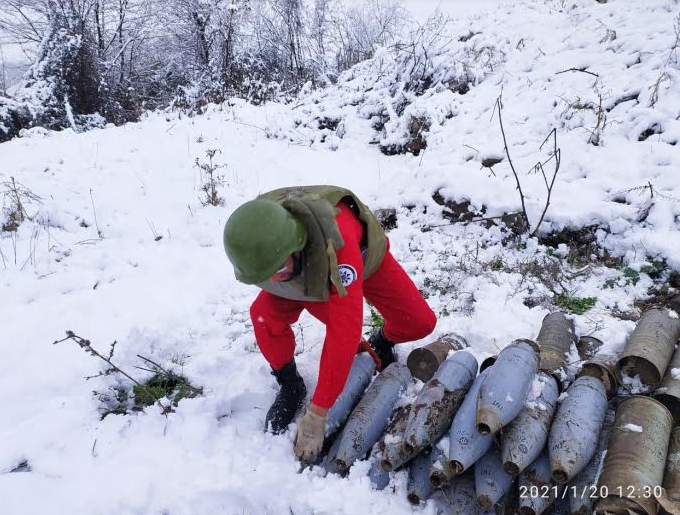
“A couple of friends of Teymur saw him and a couple of others last time at the bloodshed field in Culluje village. Along with Teymur, Murad, Cahid, Soltan, Kamil, Nizami, Nazim, Edalet Agamirov and 15 more young fellows disappeared,” said Goja.
No matter how much we long to go to visit Agdam, find our parcel of the land or remains of our house, it will still take a long time to go to Agdam. As international experts already confirmed, due to the land mine Agdam is unreachable and probably will be inaccessible for many years, unless the Armenian government finally discloses maps of the mines they have planted in Agdam.
Republic Underground
More about: Karabakh








